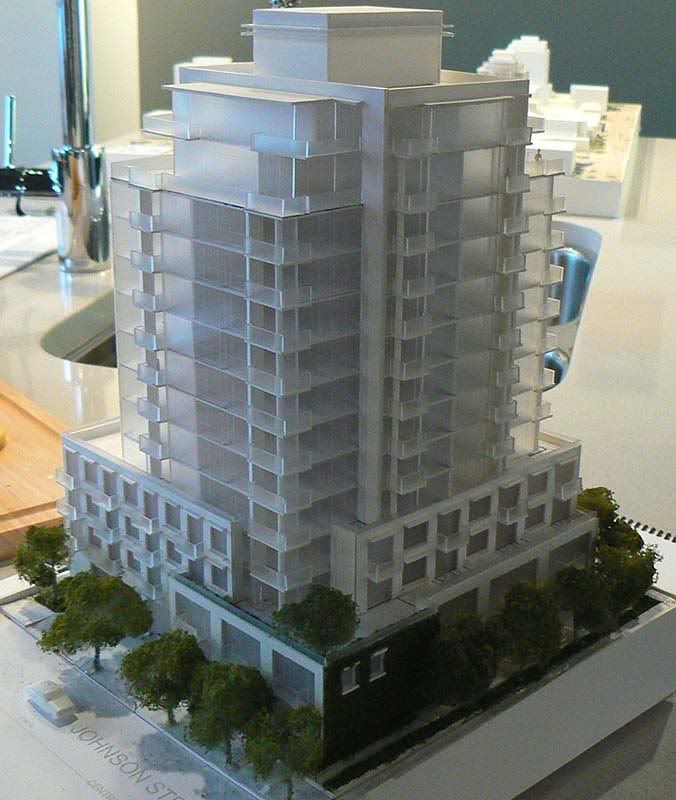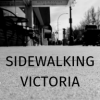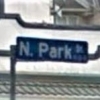
[Downtown Victoria] The 834 | Condos | 40.7m | 14-storeys | Built - completed in 2011
#61
![[Downtown Victoria] The 834 | Condos | 40.7m | 14-storeys | Built - completed in 2011: post #61](https://vibrantvictoria.ca/forum/public/style_images/master/icon_share.png)
Posted 06 December 2007 - 03:13 PM
#62
![[Downtown Victoria] The 834 | Condos | 40.7m | 14-storeys | Built - completed in 2011: post #62](https://vibrantvictoria.ca/forum/public/style_images/master/icon_share.png)
Posted 06 December 2007 - 03:15 PM
#63
![[Downtown Victoria] The 834 | Condos | 40.7m | 14-storeys | Built - completed in 2011: post #63](https://vibrantvictoria.ca/forum/public/style_images/master/icon_share.png)
Posted 06 December 2007 - 08:38 PM
Council voted this morning at Committee of the Whole to move this forward to Public Hearing. Councillor Madoff expressed concern about the height and asked what was the rationale behind the building's height
OK just what is this woman's obsession with/fear of building height? I mean is there ANYTHING in the vicinity of this project that could possibly be obscurred in any way by a 14-story building? Oh I must be forgetting, the classical antiquity that is the Telus transmission tower. I forget that since it was built before 1980, in Victoria terms it has now reached heritage status, and must be forever protected for future generations to gaze upon unobstructed. To hell with housing people, what this city needs is better views of microwave dishes.
I guess it should come as no surprise to anyone that Ms. Madoff calls James Bay home, the ground zero for all things BANANAs. I pray that come next November we do NOT see her name on the municipal ballot under a title marked "candidates for Mayor" -- and if we do, I beseech all who can vote to choose another candidate.
#64
![[Downtown Victoria] The 834 | Condos | 40.7m | 14-storeys | Built - completed in 2011: post #64](https://vibrantvictoria.ca/forum/public/style_images/master/icon_share.png)
Posted 19 December 2007 - 12:32 AM
Here is a fairly recent picture of the model:

#65
![[Downtown Victoria] The 834 | Condos | 40.7m | 14-storeys | Built - completed in 2011: post #65](https://vibrantvictoria.ca/forum/public/style_images/master/icon_share.png)
Posted 19 December 2007 - 08:45 AM
At the Atrium meeting, Madoff wondered why that project could be successful at seven storeys while other buildings demanded more height--two or three times as much.
Hmmmm let's see. The Atrium will stretch an entire city block, and so it's footprint will be nearly 3 times that of the 834 Johnson project. It will recover it's costs by being long rather than tall (much to my dismay). It might also be that since 834 is residential, the people living there might like a view of something other than just the back of the Telus tower. A taller building also allows more light into the building and doesn't cast as wide a shadow. If the 834 project had the same dimensions as the Atrium, but ran east-west along Johnson, it would create a large dark shadow on it's north side (see my comments regarding the Jack Davis Building for its similar effect). I have said it before and I am sure I will say it again, Ms. Madoff just doesn't get it. Perhaps I should have more sympathy as it may just be a severe case of Acrophobia.
#66
![[Downtown Victoria] The 834 | Condos | 40.7m | 14-storeys | Built - completed in 2011: post #66](https://vibrantvictoria.ca/forum/public/style_images/master/icon_share.png)
Posted 19 December 2007 - 09:25 AM
#67
![[Downtown Victoria] The 834 | Condos | 40.7m | 14-storeys | Built - completed in 2011: post #67](https://vibrantvictoria.ca/forum/public/style_images/master/icon_share.png)
Posted 19 December 2007 - 09:41 AM

-City of Victoria website, 2009
#68
![[Downtown Victoria] The 834 | Condos | 40.7m | 14-storeys | Built - completed in 2011: post #68](https://vibrantvictoria.ca/forum/public/style_images/master/icon_share.png)
Posted 19 December 2007 - 10:19 AM
For an entire series of public hearings she harped on developers for proposing projects higher than the 7-storey Belmont Building (think Pescatores, Sam's Deli) which, up until Gateway Green, held the title of the City's densest building. And for that entire series of public hearings, she kept being reminded by the mayor and councillors that the Belmont's density cannot apply to residential developments (or most modern office developments) because of the need for thinner floorplates on smaller lots. Not to mention the Belmont takes up half of a city block on one side and an entire block on the other.
It's not that she doesn't get it, she doesn't want to accept the physical and fiscal reality of downtown Victoria. Anyways, I'm sure she'll come out swinging in support of Atrium and make an example out of it, and we'll be back at square one with her trying to figure out why all developers are unwilling to emulate the Atrium's density at the Atrium's height.
#69
![[Downtown Victoria] The 834 | Condos | 40.7m | 14-storeys | Built - completed in 2011: post #69](https://vibrantvictoria.ca/forum/public/style_images/master/icon_share.png)
Posted 19 December 2007 - 03:26 PM
#70
![[Downtown Victoria] The 834 | Condos | 40.7m | 14-storeys | Built - completed in 2011: post #70](https://vibrantvictoria.ca/forum/public/style_images/master/icon_share.png)
Posted 19 December 2007 - 07:00 PM
#71
![[Downtown Victoria] The 834 | Condos | 40.7m | 14-storeys | Built - completed in 2011: post #71](https://vibrantvictoria.ca/forum/public/style_images/master/icon_share.png)
Posted 19 December 2007 - 08:50 PM
#72
![[Downtown Victoria] The 834 | Condos | 40.7m | 14-storeys | Built - completed in 2011: post #72](https://vibrantvictoria.ca/forum/public/style_images/master/icon_share.png)
Posted 19 December 2007 - 10:39 PM
#73
![[Downtown Victoria] The 834 | Condos | 40.7m | 14-storeys | Built - completed in 2011: post #73](https://vibrantvictoria.ca/forum/public/style_images/master/icon_share.png)
Posted 19 December 2007 - 11:03 PM
#74
![[Downtown Victoria] The 834 | Condos | 40.7m | 14-storeys | Built - completed in 2011: post #74](https://vibrantvictoria.ca/forum/public/style_images/master/icon_share.png)
Posted 20 December 2007 - 11:08 AM
Horrible Edmontonian slab towers mixed with a civil planning cult at the time obsessed with suburbanizing everything attempted to get downtown to drink the special cool-aid and pass off to the radiant garden city in the sky.
So we're left with a legacy of people who were scarred by these lovely edmonton developers, and people suckered into the cult of suburbanization.
It's going to take a long time to get things back on track, but we're working on it.
#75
![[Downtown Victoria] The 834 | Condos | 40.7m | 14-storeys | Built - completed in 2011: post #75](https://vibrantvictoria.ca/forum/public/style_images/master/icon_share.png)
Posted 20 December 2007 - 12:05 PM
Then, in the 60s, there was a big push for making the city over, except it was all this god-awful car-friendly/ suburban "Centennial Square"-style stuff, and that kept up through the 70s. Density, in that regime, was the enemy.
Really nice heritage buildings were still getting knocked down then, stuff that would be protected now. Underlying all that, IMO, was (and perhaps is?) the economic fragility of this place, hence the underutilization of what should be prime d/t real estate (eg. surface parking lots, one- or two-storey ticky-tacky crap buildings, that sort of thing).
The other aspect that saturated people's thinking was anti-urbanism, best exemplified by a hatred of density. I used to hang out downtown in the early 70s, looking for places that were crammed with people, which is why I frequented the head shops and record stores in Bastion Square (wonderful warrens on the second floors), and hung out with hippies who hitchhiked their way across Canada because that's what you did back then. (They were called "transients.")
One guy I had a real crush on was from Montreal -- and I was so impressed that he was from there, vs. a little city like Victoria. And yet his attitude -- totally typical of all those granola heads as well as squares back then -- was that the city was evil, dirty, a moloch, too dense, and he couldn't wait to get out, live in "the country," blah blah blah. Even then I thought, boy are you stupid, or what? That's all he wanted -- and by "the country," he meant "the suburbs," because they were low-density. Practically everybody hated cities back then (except me, I wanted to live in NYC). People really deeply hated the city, they misunderstood it, they didn't get it, they wanted to turn it into something that wasn't a city.
I think the reason we're experiencing a paradigm shift now is because people are figuring out that density is good, and that cities are platforms for all sorts of uses and energies, which whither and die in suburbs. The planners and architects are just following in their wake -- they're not the trendsetters and never have been. They have to make sure they have their ears to the ground so they can seize the opportunities for innovation, but change is driven by how people want to use the city.
And more people are getting the hang of how to use it, and what to use it for, which in part derives from a sped-up sense of global competition: it's just no good anymore to rely on a corporate job and sit on your fat ass all day, expecting higher forces to take care of you (although one could argue that having the government as a big employer here is an anti-innovation engine -- which is why Victoria needs to do even more to encourage entrepreneurial businesses, and ensure that the business climate doesn't suffer). People need opportunities, and they'll make their own if they're invested enough. The entrepreneurial spirit -- which cities have typically nourished, whether in criminals or good capitalists -- needs either the internet or the city, or both.
Cities are back on the radar for competitive economic reasons, after decades of being misunderstood and even despised. We need them as incubators of innovation, entrepreneurship, and creativity. That's what the planners and architects can now react to. They must help shape cities that people are attracted to, but key roles also lie with policy makers, who need to understand urban requirements. They include excellent public transportation, access to cultural and educational facilities, high-density safe streets and neighbourhoods, low crime, relative cleanliness, good environment, decent jobs (especially in knowledge industries), a business-friendly climate (cut the red tape, ease up on various taxes), and at least some hope of affordable housing (rental stock: very important). Like Vancouver, we're hosed on that last criterion, and I have no idea how that can be addressed.
#76
![[Downtown Victoria] The 834 | Condos | 40.7m | 14-storeys | Built - completed in 2011: post #76](https://vibrantvictoria.ca/forum/public/style_images/master/icon_share.png)
Posted 20 December 2007 - 12:53 PM
#77
![[Downtown Victoria] The 834 | Condos | 40.7m | 14-storeys | Built - completed in 2011: post #77](https://vibrantvictoria.ca/forum/public/style_images/master/icon_share.png)
Posted 20 December 2007 - 01:26 PM
I don't think Victoria has the same pressure on its core. Here density seems more fashion driven, mixed with some eco responsibility. Neither of which is a criticism, but it is not as inevitable here as it is in big cities.
#78
![[Downtown Victoria] The 834 | Condos | 40.7m | 14-storeys | Built - completed in 2011: post #78](https://vibrantvictoria.ca/forum/public/style_images/master/icon_share.png)
Posted 20 December 2007 - 01:32 PM
Re. European influences/ travel: put that into the very late 70s, maybe even 80s, aastra. Even if (some) North Americans traveled to Europe, N.A. cities were considered beyond the pale. Take a look at the opening for Dog Day Afternoon, made in 1975, for stark juxtapositions of suburban idyll and urban decay (connected, of course, by the freeway and its clot of cars -- there's that awful commute issue again!). Most North Americans bought into that image of the city, wholesale -- and NYC's bankruptcy didn't improve the urban image either. Mayor Abe Beame barely managed to avert it with federal loans in 1976, even though Pres. Gerald Ford in 1975 had basically told the city to drop dead.
His mind-set was the dominant one: hatred of cities.
I can't seem to generate a link for the photo, but take a look at the New York Daily News headline (Oct/75). Ford couldn't chew gum & walk at the same time, but he could muster hate for urban centres lickety-split.
There's an interesting article in this week's Crosscut (Seattle), by Margaret Pugh O’Mara, Amazon joins a parade of high tech to the urban core]Amazon joins a parade of high tech to the urban core. Nifty analysis of how "new economy" businesses (i.e., high tech) jump-started the North American (and global) economies back to life, but they did so in the 70s by moving to the suburbs and building "campuses." Now they're coming back into cities -- for all the amenities, and because the people who work for these companies want to live in urban areas (and of course one thinks of Jane Jacobs's analysis of "oversuccess," too). The forces that make cities palatable now are incredibly diverse.
But hey, I'm derailing this thread. Have strayed far (in my Jimmy Choo stilettos?) from 834 Johnson!
#79
![[Downtown Victoria] The 834 | Condos | 40.7m | 14-storeys | Built - completed in 2011: post #79](https://vibrantvictoria.ca/forum/public/style_images/master/icon_share.png)
Posted 25 December 2007 - 08:25 AM
Does she want Victoria to be stuck in the 20s or what? When was that building built anyway? It might have been considered tall in its day but not anymore.
While i don't want this to degenerate into a "bash Pam Madoff" thread, i'd just like to say this; i'm quite certain that Pam Madoff had a happy childhood growing up around the time the Belmont Building was built and so she simply can't let go of those warm, fuzzy memories. It's too bad the rest of us are victimized by it.
This proposal is slightly taller but otherwise it looks identical to Corazon. Chard built that too, didn't he?
#80
![[Downtown Victoria] The 834 | Condos | 40.7m | 14-storeys | Built - completed in 2011: post #80](https://vibrantvictoria.ca/forum/public/style_images/master/icon_share.png)
Posted 25 December 2007 - 12:34 PM
While i don't want this to degenerate into a "bash Pam Madoff" thread, i'd just like to say this; i'm quite certain that Pam Madoff had a happy childhood growing up around the time the Belmont Building was built and so she simply can't let go of those warm, fuzzy memories
there's nothing wrong with that, I just don't understand why people complain when a old trashed building is to be replaced by a nice new one, which might be tall by the standards of the 21st century.
Use the page links at the lower-left to go to the next page to read additional posts.
0 user(s) are reading this topic
0 members, 0 guests, 0 anonymous users















